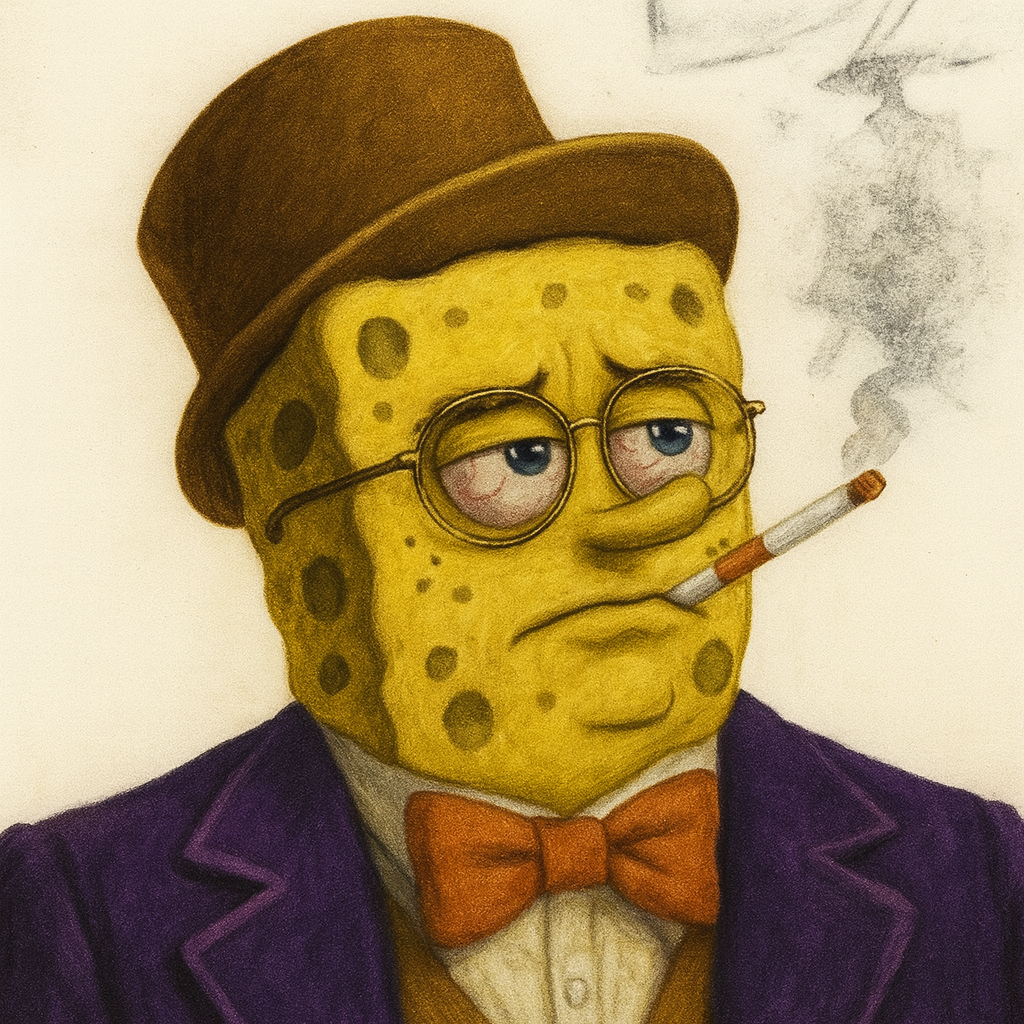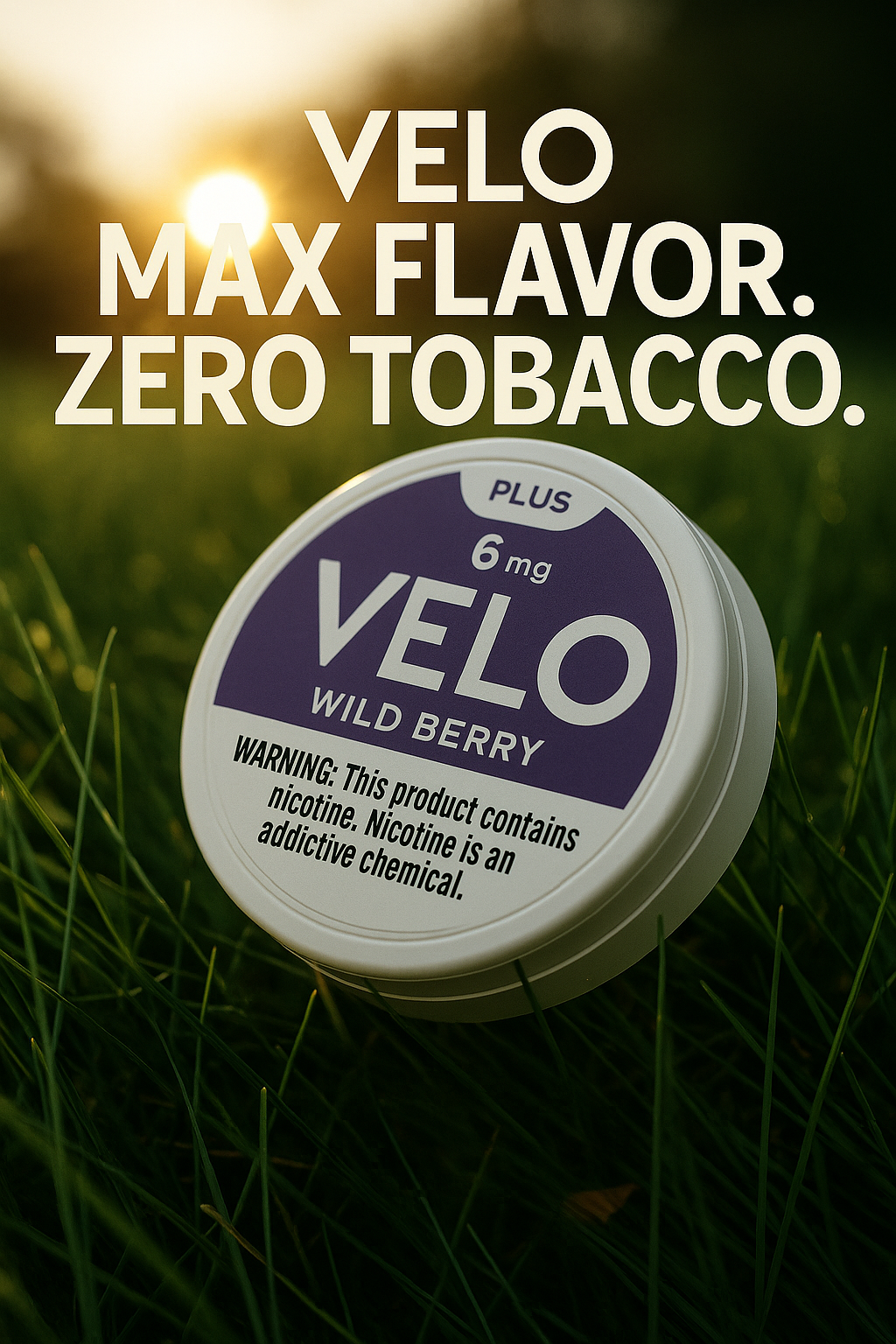
WARNING: This interpretation contains nicotine. Nicotine is an addictive chemical.
The molecule, the myth, the legend…
The Body’s Error Budget (and What Fire Steals)
Think of a cell as an information stack with three interlocking code layers: the DNA sequence (bits), the epigenome (the on/off markup), and the proteome (the compiled, folded machinery). We don’t “hit a wall” at a preset age; we drift because small errors accumulate faster than repair can erase them. Somatic mutations slip past proofreading; epigenetic marks wander (drift); proteins misfold and evade quality control; mitochondria shed electrons and leak oxidants; telomeres fray; chronic, low-grade inflammation keeps the whole system slightly off-spec. Aging, in other words, is the long arithmetic of error influx minus error correction.
Combustion spikes the influx. Light plant matter and you flood tissues with polycyclic aromatics, nitrosamines, aldehydes, and carbonyls—chemicals that glue themselves to DNA as adducts (graffiti on the code), generate reactive oxygen species that nick bases and cross-link proteins, accelerate telomere attrition, and push cells into senescence—zombie-like states that secrete inflammatory signals and corrode nearby tissue. Even the epigenome skews older: methylation clocks tick forward under sustained toxic load. Net effect: the bit-flip rate rises across all three layers while the body’s “firmware”—DNA repair, autophagy, proteostasis—gets overwhelmed. That’s why smoke-aged faces and arteries look older than the calendar says.
Separate the signal from the smoke and the math changes. Nicotine is a neuromodulator with dependence and cardiovascular effects, but it isn’t a classic DNA mutagen; the vast majority of genotoxic pressure comes from fire. When delivery removes combustion (no tar, far less carbonyl/PAH/CO burden), the error influx collapses toward what the repair systems can actually handle. In reliability language: lowering the noise floor lets the built-in error-correcting codes do their job, pushing out mean time to failure at the tissue level.
This is the information-theory read on “looking older”: your genome/epigenome is a message protected by repair codes; cigarettes jack up channel noise until even good codes leak corruption; cleaner delivery drops noise so the same codes preserve more of the message. Aging is never paused—but the slope of degradation is negotiable. Fire steepens it. Removing fire flattens it.
The Body Count vs. the Blast Radius: Why Tobacco Kills More, but Alcohol Hurts More People
Tobacco and alcohol hurt the world in different ways. Tobacco owns the body count: more than eight million people die every year, mostly the users themselves from cancers, heart disease, and lung disease accumulated over decades. Alcohol’s raw death toll is smaller, but its blast radius is wider. Because it changes behavior in minutes, a big share of the damage lands on everyone around the drinker—road crashes, assaults, intimate-partner violence, child neglect, and workplace accidents. Tobacco is a slow, inward poison; alcohol is an outward-spraying risk multiplier.
“Harm to others” is where alcohol dominates. Drunk driving kills passengers, pedestrians, and other drivers who never chose the risk. Violence spikes with intoxication, and families absorb the collateral through injuries, lost income, and trauma; even unborn children can be harmed via fetal alcohol exposure. Tobacco has externalities too—secondhand smoke causes heart and respiratory disease, and smoking materials start deadly home fires—but the majority of tobacco’s toll is internalized by the user rather than imposed on bystanders.
That split explains why the smartest play in nicotine policy is to attack plume and fire. Reduced-risk products (pouches, regulated vapes, heated tobacco) don’t turn nicotine into a vitamin, but they do remove the two engines of collateral harm: combustion and the exhaled cloud. No smoke in shared air, far lower fire risk, and—when people who smoke fully switch—dramatically lower exposure to the toxicants that make cigarettes lethal. In population terms, that’s a rare two-fer: fewer harms to users and fewer harms to everyone near them.
Put simply: if you rank by total deaths, tobacco is the bigger killer. If you rank by damage done to other people, alcohol takes the crown. And if you’re looking for scalable public-health upside, migrating nicotine from fire to cleaner delivery is the lever that shrinks both the personal toll and the collateral spillover—quietly narrowing one of the world’s largest preventable-death channels while making shared spaces safer.
The Repressed Ka: Letting the Vital Double Breathe Again
In Egyptian thought, the Ka is your vital twin—the life-current that needs steady offerings to stay composed. Bread, beer, incense: small, regular gifts to keep the double satiated so you can face the day with a level gaze. Starve the Ka and it grows thin, restless; it doesn’t disappear, it leaks—into bad dreams, sharp words, wandering attention. The ancients didn’t moralize that hunger; they managed it.
Modernity often does the opposite. We moralize first and manage later. For a century, nicotine’s altar was fire—fast, effective, and filthy. As evidence mounted, culture pushed back: plume as pariah, ash as shame, smell as scarlet letter. Public rules tightened; private superegos internalized the glare. But the Ka didn’t switch off just because the room disapproved. It repressed: the drive went underground, returning as edge, snack raids, over-caffeinated nights, scroll binges—piecemeal offerings smuggled past the guards. In Freud’s terms: the id kept knocking, the superego manned the door, and the ego spent its daylight doing crowd control. That’s an expensive way to live.
Reduced-risk products don’t canonize the drive; they decriminalize the ritual. They turn the altar from torch to lamp. A pouch is a quiet libation—the same treaty with your nervous system, minus the spectacle that used to trigger the town crier. The mouth—our oldest priesthood of taste, smell, and trigeminal feel—still demands a valid credential (the right pH, texture, onset curve). When that sensory fingerprint is met, prediction error falls, the Ka recognizes its meal, and the mind stops burning fuel on concealment. Less repression, less leakage, more available composure.
This is what a “repressed Ka” looks like in ordinary life: you forbid the obvious offering (because smoke blackens the ceiling) but never replace the function. The double starts foraging. It raids sugar for mood, caffeine for focus, drama for arousal, and numbness for come-down. The ledger balances—badly. The alternative isn’t to enthrone the Ka; it’s to engineer a cleaner corridor for feeding it: adult-only access, tight standards, zero flame, no plume. A private altar instead of a public bonfire.
None of this says “harmless.” Devotion can overrun the day. But repression-as-policy misreads human hydraulics. Drives conserve. If we won’t admit the Ka needs tending, we condemn ourselves to tending its symptoms. Give the double a safer, smaller rite and you don’t glorify desire—you right-size it. You move from a noisy, guilt-laden ritual that scorched the household to a discreet, predictable one that the household can endure. And the Ka, no longer forced to beg or steal, finally does what it was supposed to do all along: steady the hand so the person can get on with the work of being a person.
The Uncoiling Spring: A Freudian Case for Pleasure Without Punishment
Freud’s map is simple: the id wants what it wants—right now; the ego keeps you tethered to reality—time, place, consequences; the superego enforces the rules you’ve swallowed from family and culture—what’s “good,” what’s “gross,” what’s “allowed.” When wanting collides with ought, the mind leans on repression: it pushes the urge out of sight and spends energy holding it there. The drive doesn’t vanish; it leaks back as symptoms—compulsions, irritability, distraction. The elegant solution is sublimation: route the same energy through a channel the ego can manage and the superego can tolerate.
Cigarettes were a clumsy compromise. They fed the id fast—heat, draw, dopamine—but punished the other agencies: the ego paid in logistics and downtime (step outside, break flow) and in aftermath (smell, ash, mess), while the superego fired shame alarms (stigma, “dirty” cues, the mirror test: skin, teeth, breath). Because the relief came yoked to guilt and hassle, people handled the conflict by hiding, rationalizing, and sneaking—classic repression. Pressure built; the spring tightened; the behavior got more compulsive, not less.
Reduced-risk products reroute the same motive through a cleaner corridor. The id still gets a reliable state; the ego pays less (near-zero setup, predictable curves, no schedule theatre); the superego quiets because the obvious “wrongness” cues drop away (no plume, minimal odor, no ash, far less cosmetic sabotage). With less to repress, the psyche stops burning fuel on concealment and self-attack—freeing a libido budget for work, attention, composure. The mind tags that corridor as safe and repeats it: fewer inner collisions per use → faster habit consolidation → deeper loyalty to formulas that keep the sensory/predictive “checksum” identical. Design, seen through this lens, is straightforward: serve the id (fast, smooth onset), spare the ego (low latency, low variance, discreet form factor), appease the superego (cleanliness and beauty-safe cues), and never perturb the fingerprint that proves the path is safe. In one line: cigarettes were a noisy, guilt-laden compromise; RRPs turn the same desire into an integrated channel—decouple pleasure from punishment and the spring uncoils.
Pleasure’s P&L: The Libido Budget Thesis
You run on a libido budget—finite psychic cash you spend to regulate state. Three ledgers keep score: drive principal (raw energy from the id), working capital (focus/composure the ego can deploy), and a compliance tax (the superego’s guilt/shame and social penalties). Cigarettes made that math ugly: big compliance tax (odor, ash, stigma), high ritual overhead (step outside, break flow), and uneven payoff (variance). You got relief, but you burned time, attention, and self-image to get it.
RRPs act like a clean valve. Same drive, far less leakage: no plume or spectacle, near-zero latency (pop–place–proceed), tighter onset curves (less prediction error). The superego stops sounding alarms, the ego stops spending willpower hiding and apologizing, and more working capital is left for the task you actually care about. In Freud-speak, repression was costly storage; the desire didn’t vanish, it accrued interest and leaked sideways. Give it a low-friction conduit and the spring uncoils—less symptom, more function.
Scale that up and you get a productivity dividend: minutes returned, cognitive drag removed, fewer displacement behaviors. The design rules follow: kill spectacle, standardize the curve, honor the mouth’s “sensory checksum,” map products to jobs (“Burst/Steady/Coast”), and frame the behavior as composure and reliability. Net-net: renicotinization isn’t “more desire,” it’s less waste—same signal, fewer taxes, better days.
The Single Most Life-Saving Invention of the 21st Century
Here’s the wild (and, I think, correct) claim: the single most life-saving “invention” of the 21st century could be a change in delivery, not a new drug. Smoking kills more than 8 million people every year—an annual pandemic baked into normal life—and it isn’t because of nicotine; it’s because of fire. When you stop burning leaf, the toxic storm collapses. Completely substituting e-cigarettes for cigarettes reduces exposure to numerous toxicants and carcinogens. Put differently: the molecule’s signal survives, the combustion noise doesn’t—and health markers move in the right direction when people switch fully.
Now scale that physics to the real world. ~1 billion smokers; roughly half of long-term smokers die prematurely; >8 million deaths, every year. If RRPs are allowed to do for nicotine what seatbelts did for car travel and chlorination did for water—i.e., keep the activity but strip out the worst externalities—even modest, population-level switching yields life-years saved on the order of millions over coming decades. This is “public-health vaccine logic” without a clinic: leverage an existing, highly valued behavior, swap the channel, bank the delta. The reason it could rival historic lifesavers is simple throughput: unlike once-a-lifetime shots, nicotine use has daily frequency. Every session moved from fire to fiber (pouch, vape, heated) is one less micro-dose of carbon monoxide, tar, and carcinogens flowing through bodies and homes.
What gets us there isn’t hand-waving—it’s engineering and policy: product standards that crush variance and keep the “clean” truly clean; price/tax differentials that reward complete switching by adults who smoke; honest risk communication (not risk-free, but far less than burning); and hard age-gating to keep non-users out. Do that, and RRPs become a kind of silent vaccine for combustion: a harm-reduction platform that piggybacks on desire, scales through convenience, and—if we let it—quietly erases more preventable death than any single invention this century.
The Principle of Transformation in Other Industries: A Universal Law
This pattern of purification is not unique to nicotine. It is a universal law of civilizational progress. In energy, we moved from dirty coal to clean, efficient renewables. In finance, from corruptible paper ledgers to incorruptible cryptographic ones. In warfare, from blunt, noisy carpet bombing to precise, surgical drone strikes. In food, from raw, perishable harvests to clean, scalable packaged goods. Nicotine is simply the latest domain to follow this law. The channel evolves from gross to subtle, from noisy to pure.
Nicotine as the Philosopher’s Stone
For medieval alchemists, the dream was to transmute base matter into gold. But their true work was symbolic: a search for purification, refinement, and transcendence.
Nicotine’s journey mirrors this arc. The base matter was smoke—dirty, deadly, chaotic. The “gold” was the molecule itself: a clean, potent, mind-sharpening alkaloid. The 21st century’s Reduced-Risk Products (RRPs) are not merely technological gadgets—they are modern-day philosopher’s stones, distilling the subtle from the gross.
Just as alchemists spoke of solve et coagula—dissolve and recombine—RRPs dissolve nicotine from its ancient bond to fire, and recombine it with cellulose, flavor, and design.
The Principle of Rhythm
Hermeticism teaches that history moves in pendulum swings: up and down, excess and correction. Tobacco has swung from ubiquity to stigma. A billion smokers dwindled to declining rates under medical and social pressure.
Now the pendulum is swinging back—not toward smoke, but toward rebirth. The signal has not weakened; only the channel has evolved. Nicotine returns, not as a cigarette in every ashtray, but as a pouch in every pocket.
Toward the Magnum Opus
The alchemists described a final stage—the Magnum Opus, or Great Work—when matter and spirit, signal and channel, would merge in perfection.
For nicotine, the Great Work is the creation of a delivery system that is both maximally rewarding and minimally destructive. A signal so clean it no longer carries stigma. A product so refined it scales beyond replacement into rebirth.
The Magnum Opus of nicotine is not in fire, but in fiber, not in smoke, but in signal.
From Substitution to Expansion
Most analysts view RRPs (Reduced-Risk Products) as a replacement market: pouches and vapes swapping one-to-one with cigarettes. But history says otherwise. When a noisy, limited technology becomes noiseless and scalable, adoption doesn’t plateau—it explodes.
Music: MP3s didn’t just replace vinyl; they created global, on-demand music culture.
Telecom: Fiber didn’t just replace copper; it enabled the internet, streaming, cloud.
Payments: Digital wallets didn’t just replace checks; they created cashless ecosystems.
Cigarettes were a noisy channel. RRPs are noiseless. The logic of information theory predicts expansion, not substitution.
FMCG Logic: Frequency x Friction
Two factors drive FMCG dominance: frequency of use and friction of access. Cigarettes were high-frequency but high-friction: lighters, ashtrays, social disapproval. Pouches and vapes collapse friction: no lighter, no smoke, no stigma.
Frequency stays constant or rises. Friction collapses. The result? Skyward prevalence.
Information Theory and Signal-to-Noise
Cigarettes were the worst signal-to-noise ratio in human consumer history. A tiny payload of nicotine delivered inside a cloud of tar, smoke, carcinogens. Ninety-nine percent noise.
RRPs invert the ratio. Suddenly:
Higher signal (nicotine delivered efficiently).
Lower noise (no combustion, no tar).
Stronger adoption potential (cleaner payload = cleaner narrative).
From Shannon’s information theory lens, cigarettes were chaos. RRPs are clarity.
Exploration, not Equilibrium
Can pouches build loyalty that strong? Yes—arguably stronger—because the mouth is the gate here, too. A pouch’s fingerprint is pH (freebase fraction → smoothness/onset), nicotine form, coolant timing, matrix density/moisture (drip/texture), size/pressure under the lip, and the pharmacokinetic curve (ramp, peak, tail). Dwell time (10–30 min) keeps cues overlapped with state change, which is perfect for reinforcement learning. Once a user’s template forms, micro-drifts feel like that dental high spot—and they bounce.
So why does loyalty look weaker today? Early-market noise: too many SKUs, reformulations, inconsistent moisture, flavor churn, and retailers encouraging trial. That’s exploration, not equilibrium.
What the future looks like. As manufacturing variance tightens and planograms consolidate, loyalty will harden fast:
· Tighter corridors: batch-to-batch sameness becomes the moat (like Coke’s syrup spec + carbonation curve).
· Sensory branding as a key: can shape/color primes the expected feel; mouth confirms it; habit locks.
· Higher switching costs: once the internal template is set, “almost right” feels wrong—users revert.
The 50-Micron Gate: How the Mouth Makes (and Keeps) Pouch Loyalty
The mouth is a ruthless QA lab. Three sensory systems run in parallel—taste, retronasal smell, and the trigeminal nerve for cool/burn/pressure—backed by saliva chemistry and brainstem reflexes. That’s why a 50-micron “high spot” after a filling feels huge: with natural teeth we can detect on the order of 8–30 μm changes between occluding teeth. Translation: ingestibles don’t get graded on vibes; they either pass the gate or they don’t—instantly.
A nicotine pouch passes that gate with a sensory fingerprint: pH (freebase fraction → smoothness/onset), nicotine form (salt vs. freebase), coolant intensity and timing, matrix density/moisture (drip, sit, texture), and size/shape (pressure under the lip). Because dwell time is long (often 10–30 minutes), those cues overlap with the pharmacologic rise. Reinforcement learning loves that overlap: the brain binds this exact feel to this reliable internal state (focus/relief). Prediction error falls, the loop tightens, habit consolidates.
Now flip the dentist analogy. Change the fingerprint by a hair—+0.2 pH, a drier matrix, coolant one notch stronger—and it behaves like a tiny occlusal high spot: timing feels off, trigeminal cues spike early, you fuss with placement… or abort and reach back for the brand that never surprises you. That’s why formulation stability and manufacturing variance matter more here than in most FMCG: keep the corridor narrow and loyalty locks; drift and you invite churn.
Branding then becomes a trust certificate for an invisible spec. The can shape/color/mark primes the expected sensory path; the mouth confirms it; dopamine stamps the match. Multiply by long dwell and high daily frequency and you get outsized time-on-brand—compounding memory, faster retrieval (“my usual”), higher switching costs, and, at the shelf, concentration into a few “known-good” lattices. Cleaner carriers don’t mean “no risk,” but they do mean the gatekeeper is the mouth—and once a pouch’s fingerprint clears that 50-micron gate, it owns the lane.
The Mouth’s Gate: How Sensory Fingerprints + Brand Codes Lock In Pouch Loyalty
You’re right—the mouth is the key. It’s our oldest security system: three sensors run in parallel—taste (sweet/sour/salt/bitter/umami), retronasal smell (the flavor “picture”), and the trigeminal nerve (cool, burn, tingle, pressure). Add saliva chemistry, gag/cough reflexes, and a brain that’s primed for neophobia and conditioned taste aversion (the fastest learning the body does), and you get a gate that strongly favors the familiar and instantly penalizes “off.”
A nicotine pouch is built to pass that gate with a precise sensory fingerprint. Chemistry writes the feel: pH (freebase fraction) sets smoothness and speed; nicotine salt vs. freebase tweaks onset; coolants (menthol/WS) set the “clean” snap; matrix density, fiber, and moisture control sit, drip, and flavor release; size/shape tune pressure under the lip. Together they make a signature your mouth learns as known-good.
Because dwell time is long (often 10–30 minutes), the mouth gets a sustained, repeating lesson: this exact feel → reliable state (focus/relief). Prediction error falls, the loop tightens, and the brand code (can shape, color, typography, authorization mark) becomes a fast cue that says “you’re in the safe corridor.” Change any micro-parameter and the mouth flags it—too sharp, too sweet, wrong tingle, wrong drip—and the brain nudges you back to the signature that never surprises you.
That’s why branding is part of the experience, not just the box: in an ingestible with invisible specs, the logo is a trust certificate for the mouth’s approved pathway. High-frequency, long-dwell, embodied use makes the corridor deeper every day, so switching brands isn’t an abstract choice—it feels like stepping out of a lit hallway into the dark.
The Risk/Reward Equation in Perception
Humans don’t weigh risks in spreadsheets; we use heuristics. Cigarettes triggered visible negatives (smell, coughing, yellow teeth). RRPs don’t. Even if scientists debate long-term risks, the absence of immediate sensory negatives is enough to re-wire consumer judgment.
This is what Kahneman and Tversky called availability heuristic. If you can’t easily recall or see the risk, your brain treats it as low. Cigarettes made risk visible; pouches render it invisible.
No High Spots: The Oral Map That Makes Pouch Loyalty Stick
Think about a “high spot” after a dental filling: your bite has a precise occlusal map for how teeth should meet. Raise one cusp by 50 microns and your periodontal and trigeminal sensors light up with prediction error. You start tapping, grinding, tongue-scanning—active sampling to resolve the mismatch. Either the dentist polishes the high spot and the map snaps back to smooth closure, or (with enough repetition) your jaw mechanics slowly remap so you can chew without friction. That feels tiny on paper, but neurally it’s huge—micro-differences inside the mouth trigger very real plasticity.
A nicotine pouch is the same story under the lip. It must pass the mouth’s security gate with a sensory fingerprint—pH/smoothness, cooling intensity, matrix texture, moisture/drip, size/pressure—and then deliver a nicotine rise on a predictable timeline. Because dwell time is long (often 10–30 minutes), the cue pattern and the internal state overlap long enough for dopamine to stamp the association: this exact feel → this reliable state (focus/relief). Swap to a different pouch and even tiny shifts—0.2 pH, a touch drier, cooler 1 notch stronger—act like a dental high spot: the trigeminal timing is off, the onset curve feels wrong, prediction error spikes, and you fuss with placement or—you quit the experiment and reach back for the brand that never surprises you.
That’s why pouch loyalty is special. In most FMCG you hold or see the product; here you inhabit it. Chemistry is invisible, so the brand code (can shape, color, typography, authorization mark) becomes the trust cue that promises “no high spots.” Quality control and pack consistency are the polish. Keep the fingerprint and badge identical lot after lot and the bite “closes” perfectly—no error correction, just habit circuits running the routine. Change the bite and you invite churn; keep it smooth and preference locks in.
The Mouth Is the Mechanism: Brand You Can Taste
Most FMCG live in your hand or on your skin; pouches live inside your mouth. That makes them biologically unique. The mouth is evolution’s security system—taste, smell, and the trigeminal nerve run threat detection in parallel, primed by neophobia and rapid taste-aversion learning. A pouch has to pass that gate with a precise sensory fingerprint (pH/smoothness, cooling, texture, drip, onset). Because sessions last 10–30 minutes, the same cue pattern sits in the mouth long enough—and often enough—for dopamine to stamp this exact feel → this internal state. That depth of exposure and reinforcement is nothing like a chip, soda, or shampoo interaction.
It’s also a category where the “specs” are invisible. Laptops list processors; snacks list calories. A pouch’s performance is chemistry you can’t see, so the brand code—can shape, color, typography, authorization mark—becomes part of the mechanism, not just the marketing. It functions as a trust badge for the mouth’s approved corridor: see it, and your brain pre-activates the expected feel; use it, and prediction error stays near zero. Tiny deviations (cooling too sharp, moisture too low, pH slightly off) feel like a “high spot” after a dental filling—microscopic on paper, glaring to the oral map—pushing users back to the signature that never surprises them.
Add it up: high-frequency, long-dwell, interoceptive use + invisible quality + evolutionary gatekeeping turns pouches into a loyalty engine that ordinary FMCG can’t replicate. In this category, brand isn’t a label on the experience; brand is part of the experience—the remembered proof-of-safety that keeps the corridor open, day after day.
Art of the Dwell: Why “No High Spots” Make Pouch Brands Unswitchable
Pouches create long dwell (10–30+ minutes per session) and route through the mouth’s security system; once a user finds a “sensory fingerprint + brand code” that feels safe and reliable, prediction error drops and repeat becomes default. That’s why management teams elevate retention over raw reach: it validates that the category has moved from noisy sampling to installed-base behavior—lower CAC, higher LTV, tighter planograms, and concentration in a few trusted brands. In other words, the KPI they’re waving is the measurement version of your argument: less noise, more habit, stronger brands.
Think about a “high spot” after a dental filling: your bite has a precise occlusal map for how teeth should meet. Raise one cusp by 50 microns and your periodontal and trigeminal sensors light up with prediction error. You start tapping, grinding, tongue-scanning—active sampling to resolve the mismatch. Either the dentist polishes the high spot and the map snaps back to smooth closure, or (with enough repetition) your jaw mechanics slowly remap so you can chew without friction. That feels tiny on paper, but neurally it’s huge—micro-differences inside the mouth trigger very real plasticity.
A nicotine pouch is the same story under the lip. It must pass the mouth’s security gate with a sensory fingerprint—pH/smoothness, cooling intensity, matrix texture, moisture/drip, size/pressure—and then deliver a nicotine rise on a predictable timeline. Because dwell time is long (often 10–30 minutes), the cue pattern and the internal state overlap long enough for dopamine to stamp the association: this exact feel → this reliable state (focus/relief). Swap to a different pouch and even tiny shifts—0.2 pH, a touch drier, cooler 1 notch stronger—act like a dental high spot: the trigeminal timing is off, the onset curve feels wrong, prediction error spikes, and you fuss with placement or—you quit the experiment and reach back for the brand that never surprises you. Change the bite and you invite churn; keep it smooth and preference locks in.
Picture your bite before any dental work as a perfectly tuned, closed-loop control system. Periodontal mechanoreceptors in the ligament around each tooth, plus muscle spindles in the masseter/temporalis and mucosal mechanoreceptors in the tongue and cheeks, stream high-fidelity data to the trigeminal nuclei → VPM thalamus → orofacial S1. The brain holds a precise occlusal map—down to tens of microns—of when, where, and how hard cusps should meet. Chewing is largely automatic (brainstem central pattern generators), but it’s constantly error-checked by this map and trimmed by cerebellum + basal ganglia for smoothness and efficiency.
Now you get a filling that’s a hair “high”—maybe 30–80 μm. Mechanically, that’s tiny; neurally, it’s a siren. When you close, the first contact is premature on the restored cusp, so load concentrates on one tooth instead of distributing across the arch. PDL receptors fire earlier and harder than predicted, the tongue reflexively scans the area, and the jaw deviates to dodge the obstacle. In predictive-coding terms, the system had a prior—“all cusps will meet in this sequence with these forces”—and the incoming signal violates it. That mismatch is prediction error, and the orofacial network escalates it: you tap your teeth, clench, grind slightly, run the tongue over the spot—active sampling to reduce uncertainty. If the dentist equilibrates the filling (removes the high spot), the sensory stream realigns with the prior and the loop quiets. If not, the brain can remap: jaw kinematics shift, antagonist muscles co-contract earlier, and the occlusal map updates so you can chew without pain—even though the hardware is still “wrong.” That remap is literal plasticity—synaptic weight changes in trigeminal–thalamic–cortical circuits plus cerebellar recalibration—driven by persistent sensory error.
Now overlay the nicotine preference loop. A pouch’s “fit” is another occlusal map, but for flavor–feel–pharmacology: pH (freebase fraction → smoothness and early tingle), coolant level (menthol/WS timing on the trigeminal nerve), matrix density and moisture (pressure, drip, dissolution), size/shape (how it sits under the lip), and the nicotine time course (onset, peak, tail). After a few long sessions (10–30+ minutes each), your brain has a prior: this exact mouthfeel pattern will rise into this internal state (focus/relief) on this timeline. Gustatory + retronasal olfactory cortex, insula (interoception), orbitofrontal cortex (identity/value), and ventral striatum (policy) bind that pattern to outcome. When nicotine hits α4β2/α7 nAChRs on VTA neurons, you get a phasic dopamine teaching signal that stamps the association: these cues → this state. That’s Hebbian plasticity gated by dopamine, the same kind of synaptic retuning that stabilizes a corrected bite.
Switch brands or batches and introduce a micro-change—pH 0.2 higher, coolant 10% stronger, matrix slightly drier. To the mouth’s security system, that’s a high spot. The trigeminal pattern arrives earlier or sharper than predicted; sweetness/volatiles release on a different curve; the nicotine onset shifts by a few minutes. The combined cue stream fails your internal checksum. Just like an off occlusion, you start “tapping” the experience: you adjust placement, salivate more, nudge the pouch—active sampling to reconcile the mismatch. If the product re-enters your learned corridor, prediction error collapses and the loop stabilizes. If not, two paths remain: (1) abort and revert to the brand that never surprises you (most common), or (2) adapt—with enough repetitions, dopamine shifts to the new predictive cues, and synapses retune so the altered fingerprint becomes the new “first contact.” That’s loyalty or re-loyalty as physical change.
Why does dwell time matter so much? Because it maximizes the temporal overlap between the stable cue set (taste/smell/tingle + brand visuals) and the pharmacologic rise. In reinforcement learning, credit assignment is hardest when cues and outcomes are far apart in time. A 20-minute session keeps the whole packet—sensory fingerprint, brand badge, interoceptive drift—co-present while dopamine is teaching. That drives stronger LTP/LTD at the exact synapses encoding that pattern, just as repeated chewing on a corrected bite rapidly extinguishes the sense of “high.” Longer overlap → cleaner credit assignment → faster consolidation → higher switching cost for any variant that deviates.
Branding slots in exactly where dental articulation paper does: it marks the contact points you can’t otherwise see. In an ingestible with invisible specs, the badge/can/color/authorization mark is a high-salience predictor of the approved pattern. See it, and OFC/hippocampus pre-activate the expected feel; put it under the lip, and insula confirms the trajectory; dopamine arrives on time, and the loop books a win. Alter the badge or pack too abruptly and you mimic moving the occlusal contact—you’ll see a transient performance dip in loyal users until the system either re-maps or they switch back.
Put simply: a “wrong” filling and a “wrong” pouch provoke the same machinery—prediction error → active sampling → plasticity or rejection. In the dental chair, you feel it as an annoying high spot; in the pouch aisle, you feel it as a product that’s inexplicably “off.” Fix the high spot (standardize chemistry; keep the fingerprint constant; keep the badge stable), and the brain stops burning energy on error correction and lets habit circuits (dorsolateral striatum) run the policy. That is loyalty: an occlusion that closes cleanly every time.



















